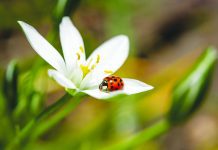Suddenly March is upon us. Calgary River Valleys (CRV) has been preparing for a busy 2020, and a number of opportunities for Calgarians to be involved with us throughout the year. Starting this month, we will be looking for potential sites suitable for our ongoing work of Riparian Restorations along Calgary’s rivers and creeks. We are also working on educational materials and events for Calgarians. The City of Calgary has a Riparian Strategy and Riparian Action Program (RAP) with many stakeholders, including CRV. You can find out more at https://www.calgary.ca/UEP/Water/Pages/Watersheds-and-rivers/Riparian-areas.aspx
In alignment with the City’s RAP program, CRV is working to improve the state of Calgary’s riparian areas and their health. Do you know of a riparian area in your community that could potentially be restored? You can contact us at [email protected] for more information.
What is a Riparian area?
Riparian areas are defined as the transitional area between an upland dry area and a water body such as a river or lake. We commonly referred to them as the banks or shore.
Riparian areas can be identified by the presence of water-tolerant plants and trees such as oplars, water birch, willows, rushes and sedges. Larger creeks or rivers may have a combination of these species, while smaller streams or lakes may only have sedges and rushes growing within their riparian area.
Riparian areas are also more biodiverse than other areas. Their vegetation attracts animals, birds, and insects. The soil in a healthy riparian area is not compacted and is laced with cavities and passageways created by decaying roots, burrowing animals and fungi, making it porous and absorbent.
Healthy riparian areas serve critical ecosystem functions important in maintaining the water quality and quantity of a river, creek, or lake, such as:
- Their plants help prevent sediment from entering the water and also absorb excess sediment from the river or creek to help improve water quality,
- Healthy riparian plants deep roots bind the soil together to reduce erosion,
- Their trees and plants provide critical habitat and important food sources for aquatic insects, amphibians, and other wildlife, including shade and shelter for fish,
- During high flows, riparian areas absorb and store water, then during low flow periods, release it back to the river or creek,
- Riparian areas also absorb and dissipate potentially damaging water energy during floods and other high water situations.
The most common way to help improve a riparian area is to introduce a wider variety of native trees and plants. Larger projects sometimes include the removal of hard structures like walls, or rocks, which can rebound high water energy rather than absorb the energy.
Come meet us
We believe our work doing Riparian Restorations is aligned with permaculture principles, and related disciplines including regenerative design and integrated water resources management. Come meet us and learn more about it.
Calgary River Valleys will be attending the Permaculture Calgary Guild’s annual “Cabin Fever” event on Saturday, March 7. It will be held at the Calgary Chinese Cultural Centre (197 1 St SW) from noon to 9 pm.
Cabin Fever is an opportunity for the Permaculture Calgary Guild to inspire their community to pursue permaculture goals and this year they are providing some great presentations on a variety of topics.
Details will be updated periodically on the PCG webpage https://permaculturecalgary.org/ and through their Facebook page: https://www.facebook.com/permaculturecalgary/










